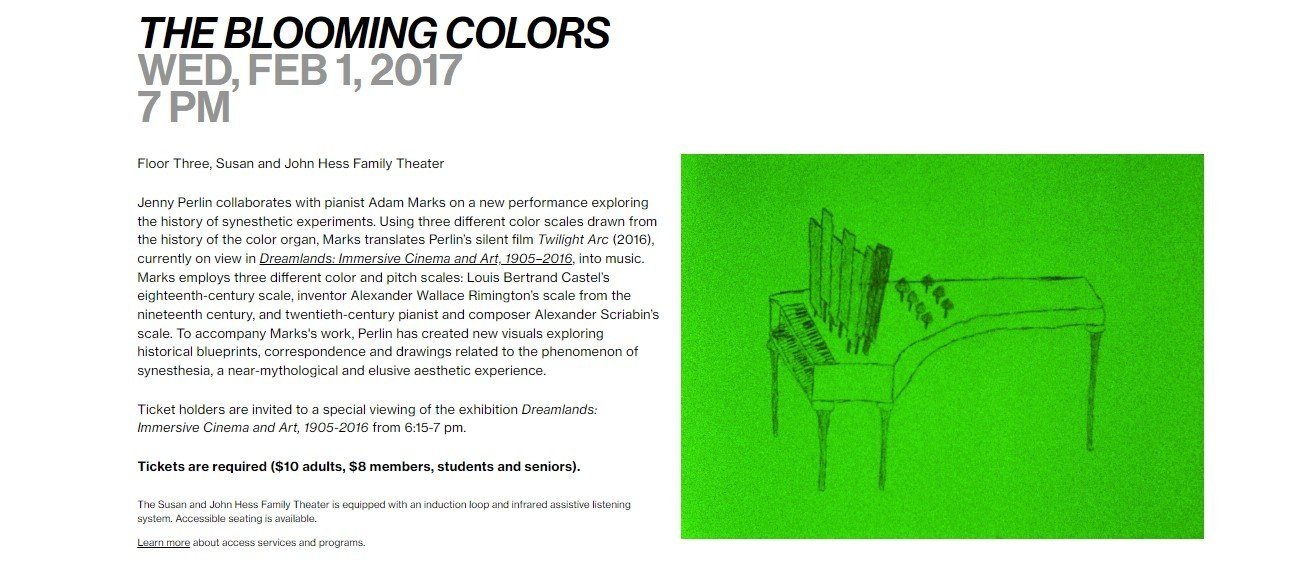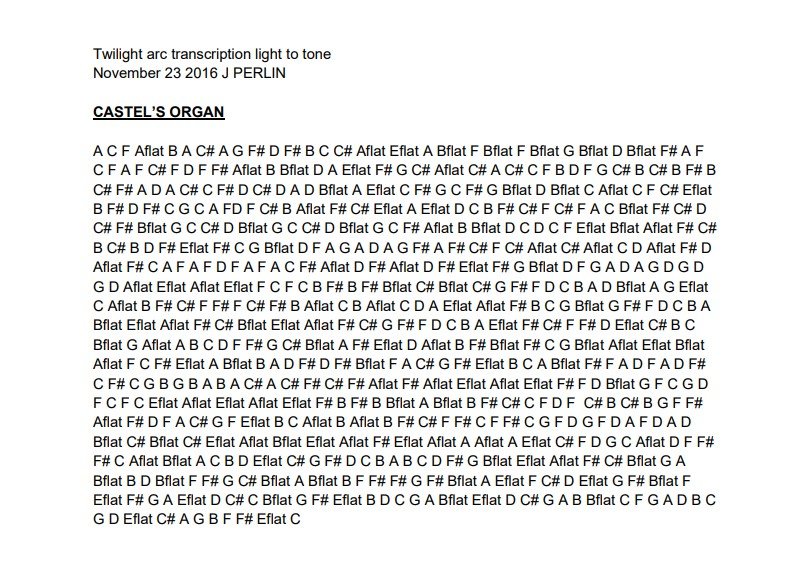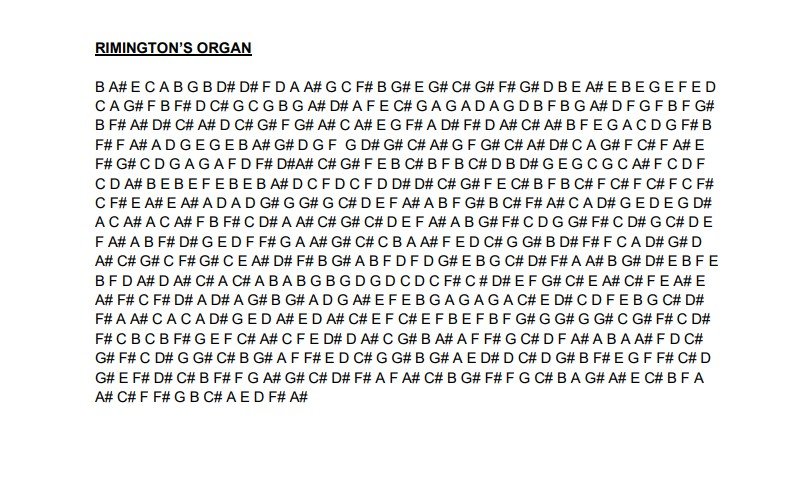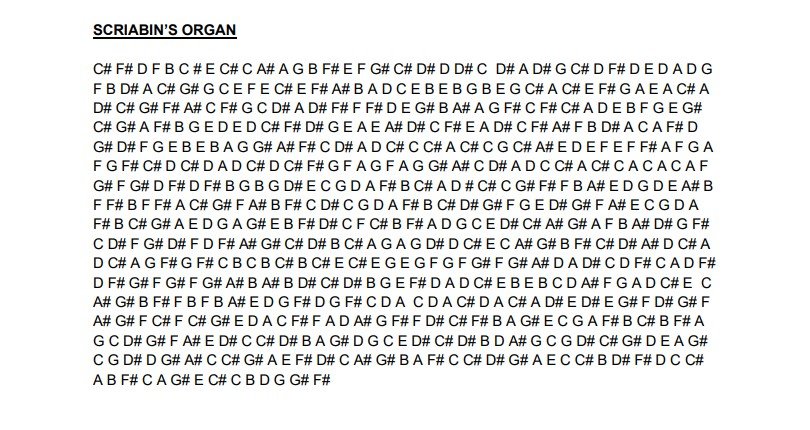



Your Custom Text Here
The Blooming Colors, a collaborative piece created by Jenny Perlin and Adam Marks, weaves together material from distinct sources to create an echo of the color organ against the backdrop of a recent sunset filmed from the Whitney Museum’s third floor performance space.
The color organ was an instrument designed to emit color corresponding with musical notes. 18th, 19th, and 20th century inventors attempted to build the device and many succeeded, but none of the instruments achieved widespread success.
The Blooming Colors’ text derives from Alexander Wallace Rimington’s 1912 book “Colour-Music: The Art of Mobile Colour.” The piece’s musical material is drawn from Rimington’s vibrant descriptions and from retranslating colors of Perlin’s film Twilight Arc back into musical notation using color organ scales from the 18th, 19th, and 20th centuries.
The Blooming Colors concludes with Claude Debussy’s famous composition “Clair de Lune,” composed at the transition between the 19th and 20th centuries. This segment of the performance makes reference to the color organ work of Mary Hallock-Greenewalt, a pianist, engineer, and performer who worked to illuminate music using unique scores and instruments of her own invention.
Whitney Performance and Description
Jenny Perlin (b. 1970, Williamstown, Massachusetts) currently lives and works in Brooklyn)
Adam Marks (b. 1978, Cupertino, California, d. 2021, New York)
The Blooming Colors, a collaborative piece created by Jenny Perlin and Adam Marks, weaves together material from distinct sources to create an echo of the color organ against the backdrop of a recent sunset filmed from the Whitney Museum’s third floor performance space.
The color organ was an instrument designed to emit color corresponding with musical notes. 18th, 19th, and 20th century inventors attempted to build the device and many succeeded, but none of the instruments achieved widespread success.
The Blooming Colors’ text derives from Alexander Wallace Rimington’s 1912 book “Colour-Music: The Art of Mobile Colour.” The piece’s musical material is drawn from Rimington’s vibrant descriptions and from retranslating colors of Perlin’s film Twilight Arc back into musical notation using color organ scales from the 18th, 19th, and 20th centuries.
The Blooming Colors concludes with Claude Debussy’s famous composition “Clair de Lune,” composed at the transition between the 19th and 20th centuries. This segment of the performance makes reference to the color organ work of Mary Hallock-Greenewalt, a pianist, engineer, and performer who worked to illuminate music using unique scores and instruments of her own invention.
Whitney Performance and Description
Jenny Perlin (b. 1970, Williamstown, Massachusetts) currently lives and works in Brooklyn)
Adam Marks (b. 1978, Cupertino, California, d. 2021, New York)
The Blooming Colors (Perlin & Marks) at The Whitney , 2017 [Tight Angle view]
The Blooming Colors (Perlin & Marks) at The Whitney , 2017 [Wide Angle view]